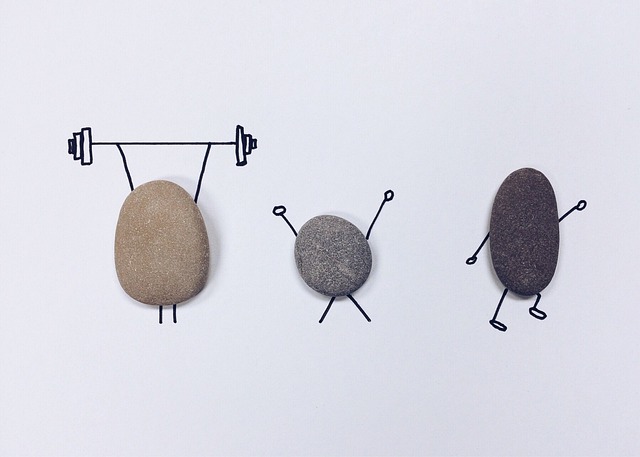Somatic therapy is a holistic approach that recognizes the deep connection between mind and body, addressing emotional and physical well-being as interconnected. By combining mindfulness, body awareness, and diverse techniques like touch, movement, and sensory experiences, it helps individuals access and process subconscious experiences rooted in past traumatic events. This process fosters self-awareness, enhances emotional release, and promotes whole-person healing by integrating cognitive exploration with somatic awareness. Through practices such as yoga, meditation, and exercise, somatic therapy facilitates transformation, empowers resilience, and cultivates sustainable coping mechanisms for long-term wellness.
“Discover the transformative power of somatic therapy, a holistic approach integrating mental, emotional, and physical healing. In today’s fast-paced world, many struggle with disconnection between mind and body, leading to stress, anxiety, and chronic conditions. This article explores how somatic therapy bridges this gap. We delve into the cognitive aspects of mental healing, the liberating impact of emotional expression, and the foundational role of physical well-being in fostering holistic recovery. Uncover a profound journey towards wholeness.”
- Understanding Somatic Therapy: Uniting Mind and Body
- Mental Healing: Exploring the Cognitive Dimension
- Emotional Release: The Power of Feeling
- Physical Well-being: A Foundation for Holistic Recovery
Understanding Somatic Therapy: Uniting Mind and Body

Somatic therapy is a therapeutic approach that recognizes the deep connection between our minds and bodies. It understands that emotional and mental healing cannot be separated from physical well-being. This holistic treatment aims to address the root causes of distress by exploring and releasing trapped emotions, memories, and physical tension stored in the body.
By integrating mindfulness, body awareness, and various therapeutic techniques, somatic therapy helps individuals access and process subconscious experiences. It believes that many psychological issues originate from unprocessed bodily sensations and responses, often stemming from past traumatic events. Through touch, movement, and sensory experiences, this type of therapy facilitates a profound sense of self-awareness, enabling clients to develop a deeper understanding of their emotional and physical patterns, ultimately fostering whole-person healing.
Mental Healing: Exploring the Cognitive Dimension

Mental healing involves delving into the cognitive dimension, where thoughts, beliefs, and perceptions shape our emotional well-being. In therapy, this entails exploring and challenging negative thought patterns, biases, and irrational beliefs that can contribute to stress, anxiety, and depression. By fostering a deeper understanding of these internal processes, individuals can begin to untangle themselves from self-limiting paradigms, promoting a more positive and adaptive mindset.
Somatic therapy plays a crucial role in this process by helping clients connect their mental experiences with bodily sensations. Through various techniques, such as mindfulness meditation and body scanning, individuals learn to recognize the physical manifestations of emotional states. This awareness allows for more effective management of stress responses and fosters a sense of embodied empowerment, enabling people to navigate life’s challenges with greater resilience and self-compassion.
Emotional Release: The Power of Feeling

Emotional release is a cornerstone of holistic healing, especially within the realm of somatic therapy. By acknowledging and expressing feelings, individuals can break free from the cycle of suppressed emotions that often manifest as physical discomfort or psychological distress. Somatic therapy encourages clients to explore their sensations and emotions in a safe, supportive environment, allowing them to gain profound insights into their bodies’ wisdom.
The power of feeling lies in its ability to facilitate transformation. When emotions are recognized and given space, they can serve as powerful catalysts for change. This process helps individuals reestablish a sense of balance and harmony between the mind and body, fostering a deeper connection with themselves and promoting overall well-being.
Physical Well-being: A Foundation for Holistic Recovery

Physical well-being plays a foundational role in holistic recovery, serving as a critical pillar alongside mental and emotional healing. Somatic therapy recognizes that our bodies hold memories and experiences, often manifesting as physical sensations or ailments. By integrating physical practices like yoga, meditation, and exercise into therapeutic routines, individuals can process and release deep-seated traumas and stressors. These activities not only promote relaxation but also encourage a deeper connection between the mind and body, fostering a sense of grounding and self-awareness.
This holistic approach ensures that therapy addresses the whole individual—mind, heart, and body. When combined with mental and emotional healing techniques, physical well-being creates an environment conducive to profound transformation. It empowers individuals to take charge of their health, cultivate resilience, and develop sustainable coping mechanisms for long-term wellness.
Incorporating mental, emotional, and physical healing in therapy through somatic practices offers a comprehensive approach to well-being. By understanding the interconnectedness of the mind and body, somatic therapy provides a transformative experience, enabling individuals to achieve holistic recovery. This integrated method addresses the cognitive, emotional, and physiological aspects of health, fostering a deeper sense of balance and resilience. Somatic therapy empowers folks to navigate their inner world with awareness and grace, ultimately enhancing their overall quality of life.
